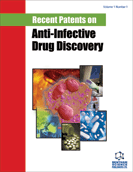Abstract
In endemic regions of brucellosis, childhood brucellosis includes up to one-third of all cases of human brucellosis. The main source of infection in children is consumption of unpasteurized dairy products and traditional local foods containing dairy products. The older boys are more involved in animal care. Boys are more commonly infected than girls. Common symptoms and signs include fever, arthralgia, sweating, peripheral arthritis and splenomegaly. Peripheral arthritis especially monoarthritis is more common and the most commonly affected joints are hip and knee. All organs may involve during the course of the disease. Isolation of Brucella spp. from the blood, bone marrow or other tissue fluids is the hallmark of diagnosis. Serologic tests are the main tools of diagnosis of brucellosis in endemic regions. Standard agglutination test (SAT) with titers >1:160 and the 2-mercaptoethanol (2ME) test ≥1:80 are suggestive of active infection. Children older than 8 years should be treated with doxycycline for 45 days or 8 weeks plus gentamicin for 7 or 5 days respectively or doxycycline for 45 days and streptomycin for 14 days. Also doxycycline plus rifampin or cotrimoxazole plus rifampin for 45 days may be alternative regimens. Cotrimoxazole plus rifampin for six weeks is the regimen of choice for the treatment of patients younger than 8 years old. Gentamicin for 5 days plus cotrimoxazole for six weeks may be a suitable alternative regimen. The article presented few of the patents associated with Brucellosis.
Keywords: Brucellosis, children, epidemiology, clinical manifestation, treatment, patent, peritonitis, endocarditis, lymphopenia, hrombocytopenia
 46
46





















